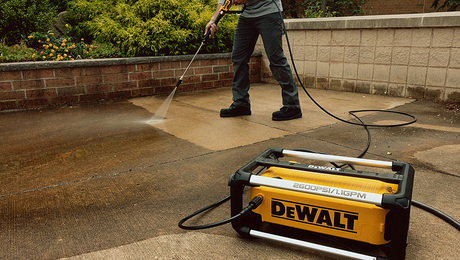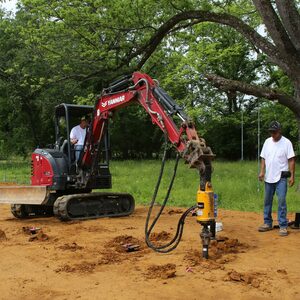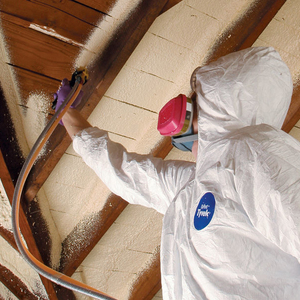Fine Homebuilding Article “Rain-Screen Walls: a Better Way to Install Siding”
Hi Guys,
Good morning. I have a quick question for you. I don’t see any Z-Flashing detailed in the Fine Homebuilding article https://www.finehomebuilding.com/PDF/Protected/021137086.pdf.
Specifically at the very bottom of the Ply/OSB sheathing they show the Ice and Water + Housewrap etc.
This would leave the bottom edge of the panel exposed. (e.g. where you would see the number of plys)
I was thinking of running just some 5/8″ Z-Flashing along the bottom (sheathing is also 5/8″. I wasn’t going to adhere it to the cement, but just tack it on to the sheathing.
Can anyone help me out as to whether this is the right move?
- I had also considered running a bead of sealant, so as it would adhere to the concrete, just to keep critters, moisture, air, or anything else out.
- I was going to install it under the Ice and Water shield, housewrap, etc.
Thanks,
Kevin



















Replies
I'm attaching a picture of what I mean from the Certainteed webside installation instructions.
Tyvek says to go 2" beyond the sill plate and seal if used as an air barrier. However, if I do that the Tyvek will be visible under the siding.
Thanks again,
Kevin
That picture you show looks like standard cladding rather than rain screening.
When I think of rain screening, I think of an impermeable underlayment covered by a semi-permeable outer layer. The idea being that most of the water is repelled by the outer clad layer and the rest of the water is drained off of the underlying layer. Inso, there is often plywood covered by housewrap then a layer or two of tar paper on which vertical wood firring strips are applied then the clapboards. At the bottom, the spaces between the vertical fir strips is either screen vented over or filled with some insect deterring mesh.
For the drawing you show the horizontal starter strip would hold any water that got behind the outer cladding therefor that cladding needs to be completely water tight. The 1/4" overlap at the bottom even acts as a drip edge for the system. But the downside as you point out is the exposed plywood edge - which is exposed to bugs as well as water splash from the ground. The best way to treat this is just like you said... Z flashing. I suppose another method could be to make a custom L shaped pressure treated and/or painted starter strip that is caulked back to the foundation. Or, maybe some self adhering flashing tape.
DC
DC,
Thanks for your reply!
The picture is from the Certainteed installation manual. The Rainscreen Walls FHB article that I linked above doesn't show any flashing there either though.
The starter strip shouldn't be a problem for me, because I'm going to go with Drainwrap as opposed to furring it out, so there should be some small gaps beneath the starter strip for water to escape. I could even run a saw and put 1/16" grooves every couple feet to make sure there is a path for the water to drain.
I just linked the FHB article because I knew it off hand and it seems like a Rainscreen Wall should be even more waterproof than a typical installation.
I was just surprised that any unpainted / untreated wood would be left exposed only 6" up from grade. I know it's only a 5/8" exposure, but still seemed weird to me.
Thanks,
Kevin
Consider insect screen
Hi Kevin,
You raise a good question, the type that comes up when theoretical drawings meet the real world of building.
Assuming the layer behind the siding is properly detailed against air and water intrusion - this is typically the housewrap, rigid foam, or structural sheathing with integrated housewrap (eg: ZipSystem), and the ventilation space behind the siding has both intakes and exhausts so that it functions properly, then your only major concern with this lower section should be the possibility of insects. For that, a simple layer of insect screen, or one of the corrugated strips like Coravent with screening attached will do the trick nicely. You don't want to do any details here that will interfere with the flow of air. That air is the key is the key to the system, and will also dry out the lower edge of the sheathing should it get wet.
Here is the pro graphic I made.
Hi Kevin,
I understood what you meant, but perhaps I should have started by asking a clarifying question: Are you concerned with water splashing up and wetting that bottom edge of the sheathing, or water coming down the wall from behind the rainscreen?
It's still a valid question, I'm only wondering if it is being misinterpreted to being a problem with only vented rainscreen setups. In other words, isn't having the bottom edge of the sheathing exposed a problem regardless of the presence of vented rainscreen? The housewrap overlap peeking out from behind the water table would still be an issue, no?
Hi Justin,
I am worried about splash up.
I know that the OSB is 6" above grade, but it still seems like splash up could occur.
Really I just have a phobia about leaving any untreated / unpainted wood exposed anywhere outside.
Thanks,
Kevin
Kevin
Not a phobia, smart building.
Over the years (and even immediately) that 6" starts to shrink.
Shade, ground cover, bush growth, all lead to just what you are trying to avoid.
I'm also not clear why dropping the 1x8 water table would then require you to fill that space with foam?